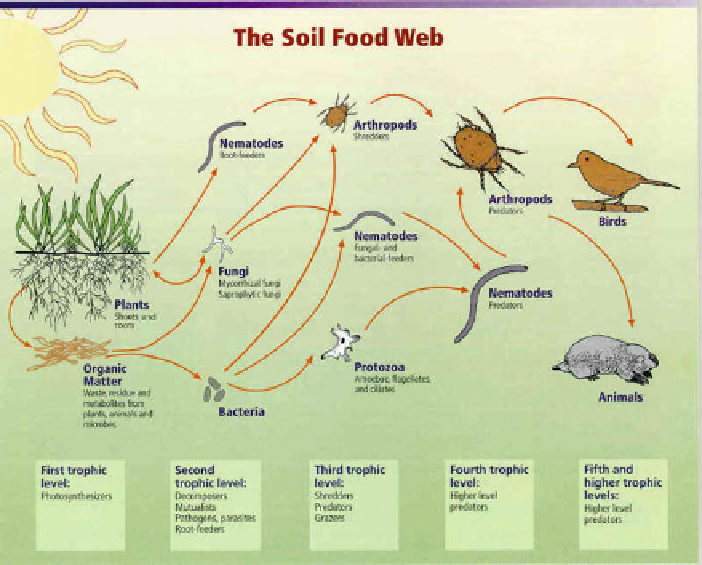Environmental Engineering Reference
In-Depth Information
Fig. 13.2
A simplified example of a food web, illustrating the feeding relationship between
organisms (source: Ingham
2000a
; reproduced with permission)
•
Megafauna: organisms larger than 20 mm, for example, moles, rabbits and
rodents.
•
Macrofauna: organisms with a size of between 2 and 20 mm, for example,
woodlice, earthworms and beetles.
•
μ
Mesofauna: organisms with a size of between 100
m and 2 mm, for example,
tardigrades, mites and springtails.
•
Microfauna and Microflora: organisms with a size smaller than 100
μ
m, for
example, yeasts, bacteria and fungi.
Most organisms in soil fall into the category of
microfauna
(more correctly called
microorganisms
). Microorganisms are characterized, by definition, by the fact that
they only can be observed with a microscope, although there are exceptions. Soil
microorganisms concern a large and diverse group of organisms, forming three dis-
tinct types, that is,
fungi
,
bacteria and archaea
. The majority of the soil organisms
belong to the invertebrates, that is, organisms lacking a vertebral column.
According to another type of categorization, organisms are subdivided into three
different domains. The first domain is the
Eukaryotes
(from the Greek words
karyon
(core) and
eu
(good)), that is, organisms with one or more cells with a cell structure

Search WWH ::

Custom Search